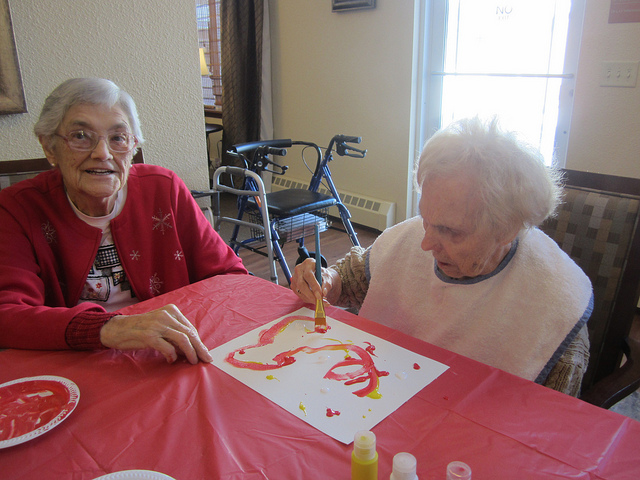Two weeks after the first U.S. case of COVID-19 was identified in Snohomish County, Washington, in early 2020, my dad had a stroke at his home just across Puget Sound. More COVID-19 cases were about to surface at a nearby skilled nursing facility, marking the beginning of a crisis for nursing homes across the country.
My dad was incredibly lucky. It was minor stroke, and he didn’t need nursing home care. But the type of stroke he had is a leading risk factor for cognitive impairment and vascular dementia. I know that nursing care may be in his future.
Throughout the pandemic, nursing homes have been in the headlines as places with uncontrolled COVID-19 cases and social isolation, which research shows can worsen people’s health. About a third of all reported U.S. COVID-19 deaths have been in nursing homes, also making them one of the most dangerous places to work.
As the only child of aging parents, the stories from the pandemic left me worried about the idea of handing over the responsibility of caregiving to a nursing home someday. As an expert in health care delivery systems who has called upon policymakers to prioritize nursing homes throughout the pandemic, I know it does not have to be this way.
There is one step in particular that nursing homes can take that I believe would improve the environment for residents: invest in staff to reduce turnover and allow nurses to spend more time with each resident.
Nursing homes and their role in the pandemic
Nursing homes, including skilled nursing facilities that deliver medical services or rehabilitative therapy, provide 24/7 care to about 1.5 million residents in the United States.
People are often admitted to nursing homes when they need assistance with daily activities, such as dressing, bathing and feeding themselves. They may need medical or rehabilitative therapy either long term or while recovering after surgery. Nursing homes are often an option for people with dementia as their health deteriorates; half of nursing home residents have dementia, including Alzheimer’s disease.
Researchers have examined whether nursing homes with high ratings from the Centers for Medicare and Medicaid Services were associated with fewer COVID-19 cases, but they found mixed results.
One factor that was associated with lower infection rates was more minutes spent per patient with registered nurses. That means more staff.
Challenges facing nursing home staff
Hiring more people is not an easy task. Since before the pandemic, nursing homes’ ability to meet minimum staffing expectations set by the federal government has been a challenge.
Demand for nursing home staff is high. The U.S. Bureau of Labor Statistics projects job growth for certified nursing assistant positions will be twice the average rate of that for other occupations over the next decade, mostly driven by an aging population with complex health needs. Demand for registered nurses is also expected to be high. Yet the supply of workers is limited.
A recent study found that, on average, a nursing home’s entire nursing staff could turn over at least once in a year, and some more than three times in one year. In the most recent national jobs report, nursing and residential care facilities as a group continued to see a downward trend in employment compared with other sectors of health care.
There are reasons for the high turnover in nursing homes and low supply of nursing home workers. It has been well documented that nursing assistants, for example, have low wages, averaging $14.84 per hour in nursing homes, few benefits, job dissatisfaction and a lack of career mobility. The pandemic has made it even more difficult for nursing homes to recruit, given concerns over insufficient personal protective equipment and high rates of COVID-19 infections and death among staff.
Now, an emerging threat to the supply of workers is low uptake of the COVID-19 vaccine due to a lack of trust among nursing home staff in institutions that were supposed to protect them.
3 ways forward
Over the past year, I have written and testified before Congress about investing in the careers of nursing home staff by raising wages and improving their job safety.
These facilities could have better chances of recruiting from among the 2.3 million leisure and hospitality workers who remain unemployed because of the pandemic if they made nursing home jobs safer and increased pay. Leisure and hospitality is the most common industry from which health care has drawn workers, according to my research.
President Joe Biden recently called for a $400 billion investment through an expansion of Medicaid – the state-federal program that insures low-income people, those with disabilities and millions of older people – to strengthen home-based care. In-home care visits are often more affordable than nursing homes for those whose family or friends can care for them in the home or the community. The investment aims to significantly improve pay and benefits for home health and home care aides.
Nursing homes should not be left behind. If just 5% of that $400 billion went to nursing home staff, my colleagues and I estimate it could raise the wages of certified nursing assistants in nursing homes by $5 per hour for at least one year. Staff would be under less pressure to work multiple jobs, and the industry could draw more experienced workers.
Another way to improve staffing: The federal government could increase reimbursements through Medicaid – the primary government payer of nursing homes – to the level of Medicare, which reimburses at a higher rate. That would put nursing homes in a better position to pay their staff more and invest in better care.
Finally, if increasing pay led to a larger supply of workers, nursing homes would have more flexibility to explore novel models of care. Those models include dedicating more staff to fewer residents – potentially through smaller nursing homes – which could lead to better health care for residents.
The problems are fixable. Improving nursing home staffing and care models can help spare millions of families – including mine – the future agony of deciding whether nursing homes are a good place for mom or dad.
Bianca Frogner, Associate Professor of Family Medicine, University of Washington School of Medicine, and Director of the Center for Health Workforce Studies, University of Washington
This article is republished from The Conversation under a Creative Commons license. Read the original article.
















